Málaga has recovered a significant strip of land
from the Mediterranean between its present harbor and the
hills that rise to its Alcazar. On it they've
placed parks and monumental buildings in a lovely space
that seems to flow into a contiguous tropically verdant
space between the arid brown castle hill and aqua
sea.
Ayuntamiento
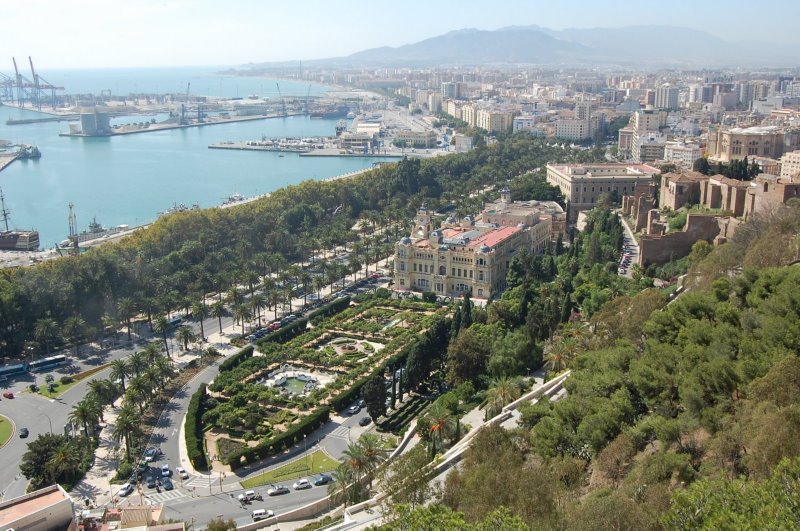
At center in the picture above is the city hall, a lovely
building abutting an Italian garden with long pools
reminiscent of the Moors. It's at the base of the
Alcazaba hill (right). In the Moors' days, the
Mediterranean came to the base of the hill. Will global
warming bring more water to these gardens?
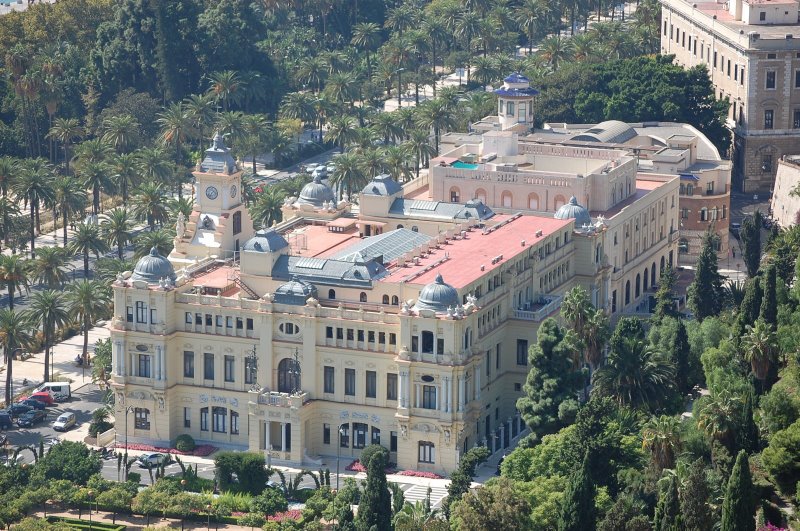
The 19th century Ayuntamiento (City Hall) is a dramatic
building which begins a set of similar buildings that
line Cervantes Avenue.
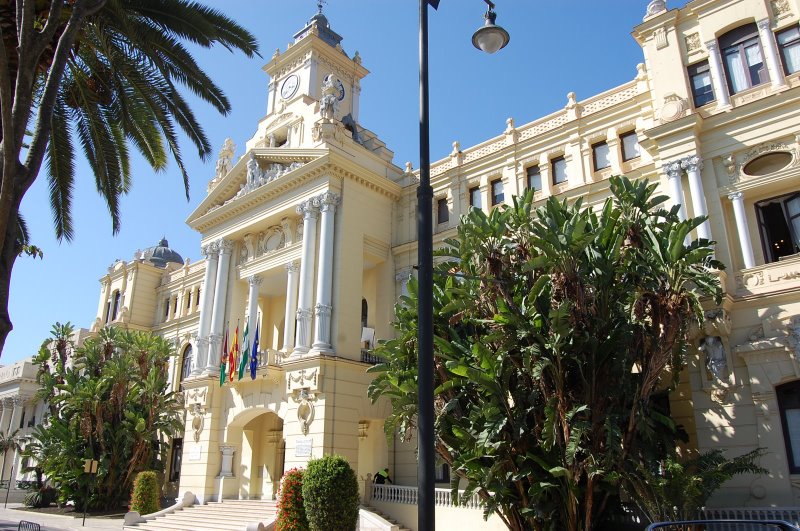
A street level view shows some of the ornamentation on
the neo-Baroque Ayuntamiento symbolizing the long history
of this city. Two local architects -- Vera Manuel Rivera
and Fernando Guerrero Strachan -- designed the building.
Inside it has its hall of mirrors like many
elaborate European city halls.
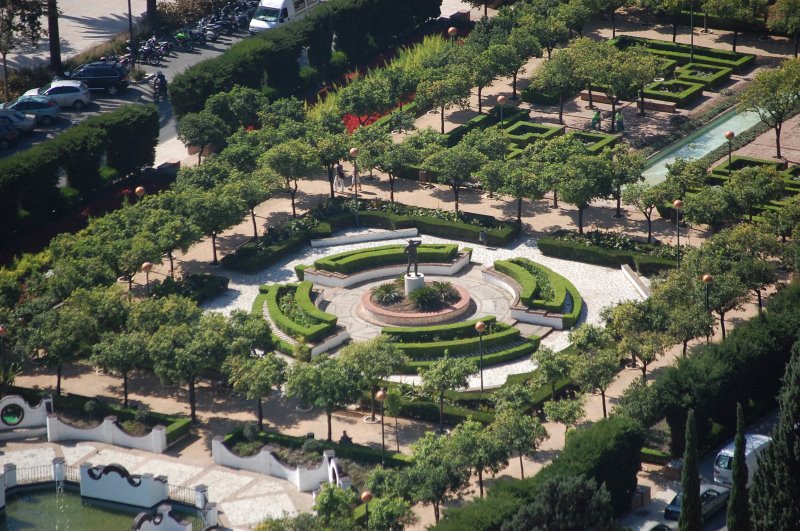
Elaborate symmetrical gardens and swan-filled pools
occupy the strip of land just east of the
Ayuntamiento.
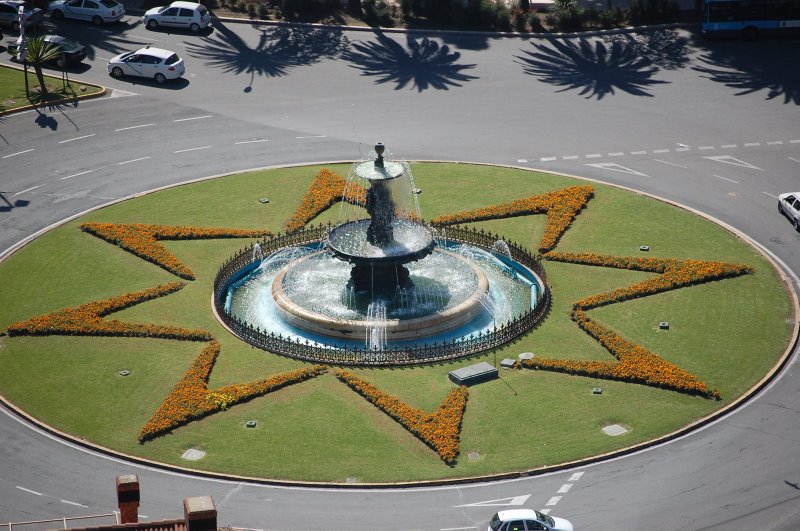
Even the traffic circles in this area are impeccably
maintained and make a good impression on tourists driving
into town. Parking is well marked and readily available
-- and very close to the main attractions of the
cathedral and Alcazaba.
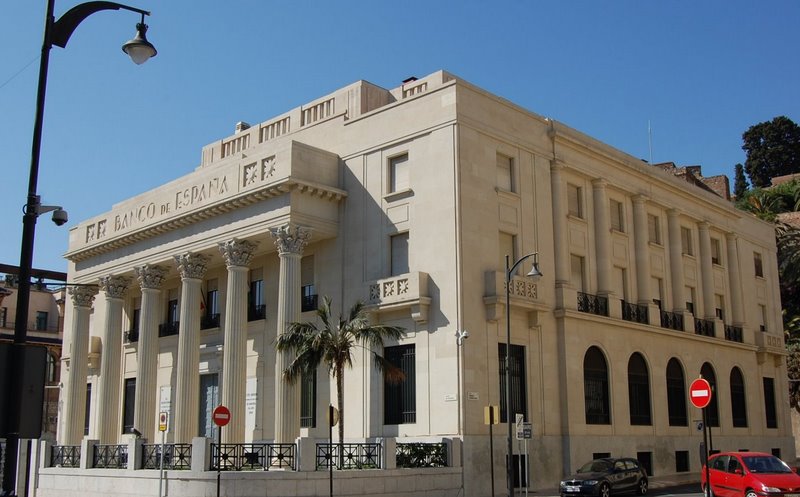
The 1936 Art Deco jewel shown above with traditional
Corinthian columns is one of the monumental buildings on
the Avenue de Cervantes. It faces the long park and
harbor.
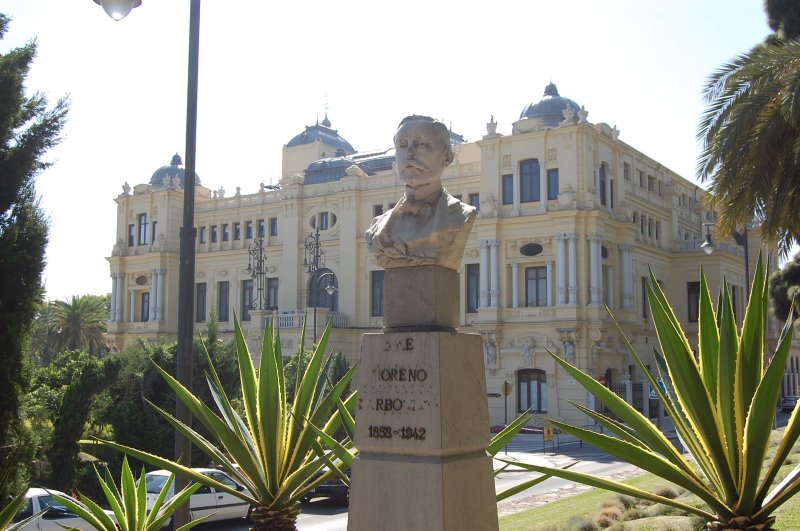
Parks are filled with statues and tiles commemorating
important people and places in Málaga province.
(That's the Ayuntamiento in the background.)
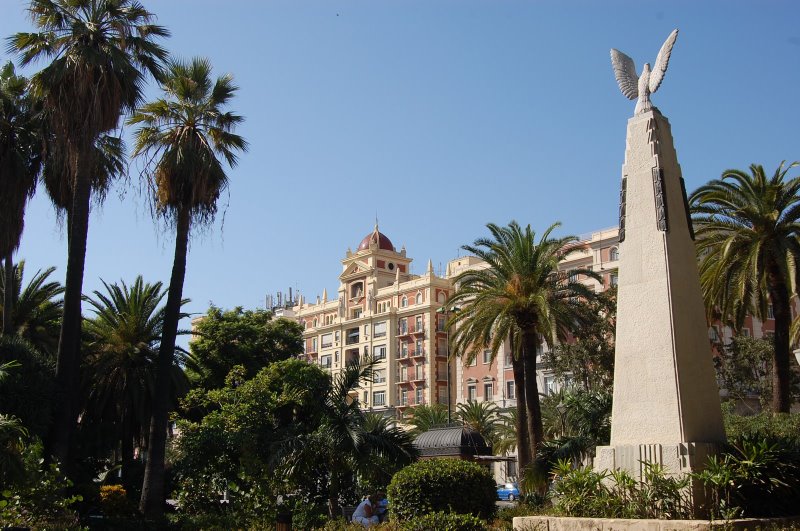
Paseo del Parque
Between the monumental buildings at the base of the
Alcazaba hill and the harbor lies a long strip park
called the Paseo del Parque.
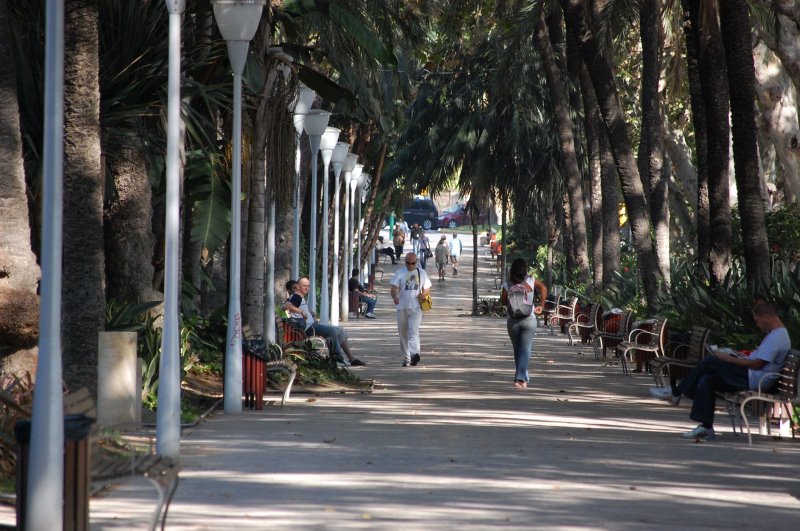
It's a lovely cool space with a tropical feel to it. Wide
promenades, shrouded by palms, line each side with
Renaissance and Baroque gardens in between.
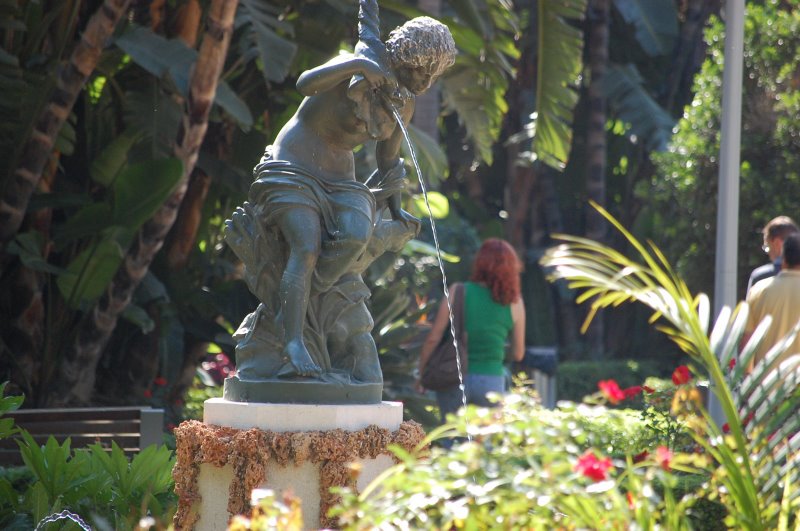
The park was built primarily between 1897 and 1921. But
since then, Málaga has been adding statuary to the
park and integrating it with the water gardens. For
example, this 5' tall cast iron statue, called "The Nymph
of Caracola," is French and was built 20 years before the
park started but first moved here in 1922. After 70 years
of vandalism, it was in fragments but luckily had
appeared in many postcards that guided its recent
recreation.
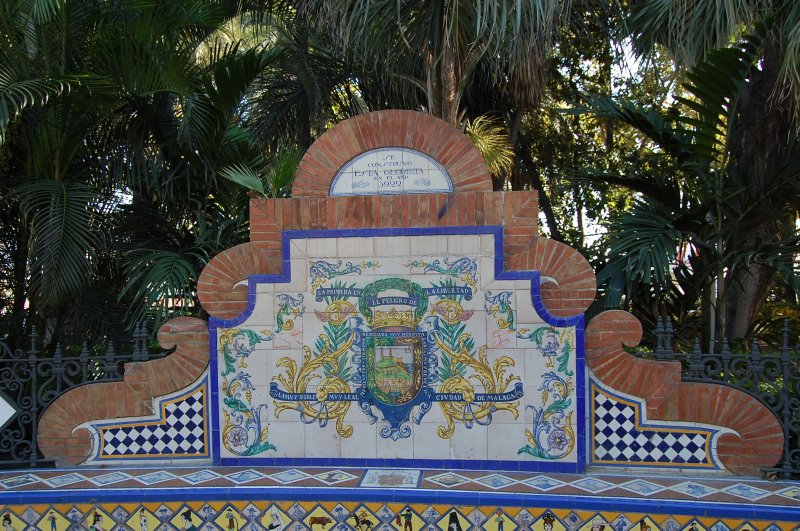
Elaborate tile works honor Málaga's sister
cities in Andalusia.
Stadia
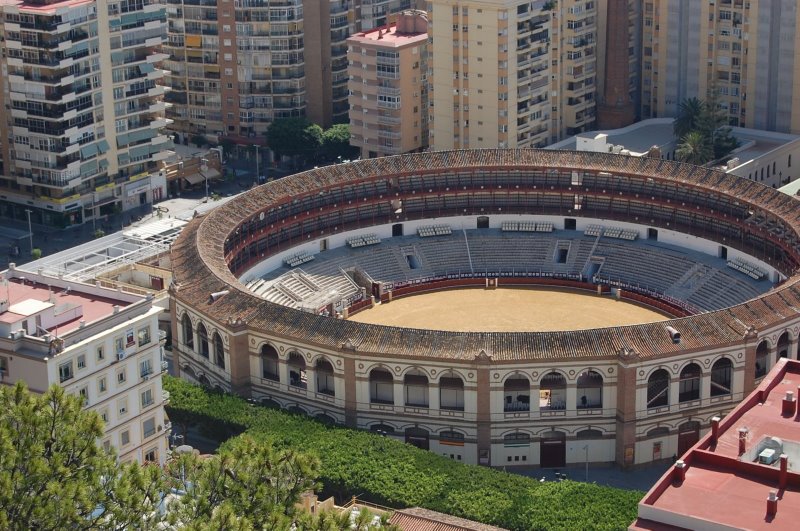
Also built on the land taken back from the sea are many
high rises in an area called "Malagueta" which includes
the bullfight arena. This 1874 stadium by Joaquin Rucoba
is not round -- it has 16 sides. Just beyond is a beach
fortified with white sand from the Sahara.

Our visit was on a day no bulls would die. (Most days are
such, as there are bullfights here only during festivals.
Málaga has its biggest celebration in mid-August
to commemorate taking the city from the Moors five
centuries ago.)
In the 1800s, Madrid built a new bullring in a style
called Neo Mudéjar, and any ring built after that
copied this style (although the iconic horseshoe arches
are not all that obvious here.) The field is about 170
feet in diameter and the seats hold 14,000 -- more often
for concerts than bullfights. Not all horns here end up
in the sand.
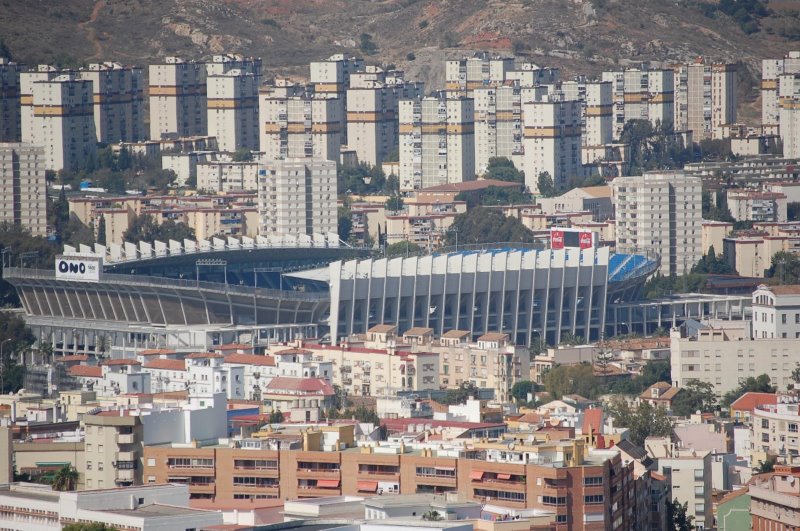
A much more utilized sports palace is the modern
equivalent to the Plaza de la Toros: the soccer stadium
called La Rosaleda. It holds 37,000 spectators who watch
Malaga's Spanish first division club. Many fans are Brits
who flock to the Costa del Sol.
Last we visit two religious sites: one holds the
floats that parade during religious festivals. The other
holds one of the most interesting crypts in Spain.
Join us by
clicking here.
If you have good bandwidth, Please join us in
the following slide show to give the
Málaga, Spain the viewing it deserves by clicking here.
|
|

